Advertisements
Advertisements
प्रश्न
Derive the following equation of motion by the graphical method : v2 = u2 + 2as, where the symbols have their usual meanings.
उत्तर

In the given figure, the distance travelled (s) by a body in time (t) is given by the area of the figure OABC which is a trapezium.
Distance travelld = Area of the trapezium OABC
So, Area of trapezium OABC,
= `"(Sum of parallel sides)(Height)"/2`
=`"(OA+CB)(OC)"/2`
Now, (OA + CB) = u + v and (OC) = t.
Putting these values in the above relation, we get:
`s = ((u+v)/2)t` ....(1)
Eliminate t from the above equation. This can be done by obtaining the value of t from the first equation of motion.
v = u + at
So,
`t = "v-u"/a`
Now, put this value of t in equation (1), we get:
`s = (((u+v)(v-u))/(2a))`
On further simplification,
2as = v2 – u2
Finally the third equation of motion.
`v^2 = u^2 + 2as`
where
(s) - Displacement
(u) - Initial velocity
(a) - Acceleration
(v) - Final velocity
(t) - Time taken
APPEARS IN
संबंधित प्रश्न
What type of motion is represented by the following graph ?

What does the slope of velocity-time graph represent?
Multiple choice Question. Select the correct option.
The distance covered in the adjoining velocity-time graph is :
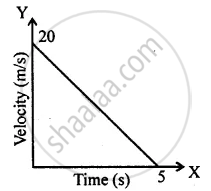
A body at rest is thrown downward from the top of the tower. Draw a distance – time graph of its free fall under gravity during the first 3 seconds. Show your table of values starting t = 0 with an interval of 1 second, (g = 10 ms−2).
From the velocity – time graph given below, calculate Average velocity in region CED.

Given below are the speed -time graphs. Match them with their corresponding motions :
 |
(a) Uniformity retared motion |
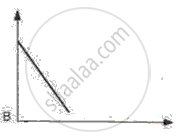 |
(b) Non-uniformity acceleration |
 |
(c) Non-uniform motion |
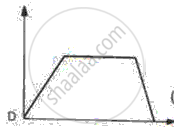 |
(d) uniform motion |
What can you say about the nature of motion of a body of its displacement-time graph is:
A straight line inclined to the time axis with an acute angle?
Draw distance-time graph to show:
Uniform velocity
Figure shows the distance-time graph of three students A, B and C. On the basis of the graph, answer the following :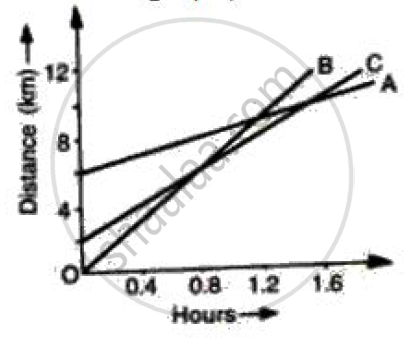
Which of the three is traveling the fastest?
The velocity-displacement graph describing the motion of a bicycle is shown in the figure.
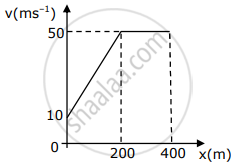
The acceleration-displacement graph of the bicycle's motion is best described by:
